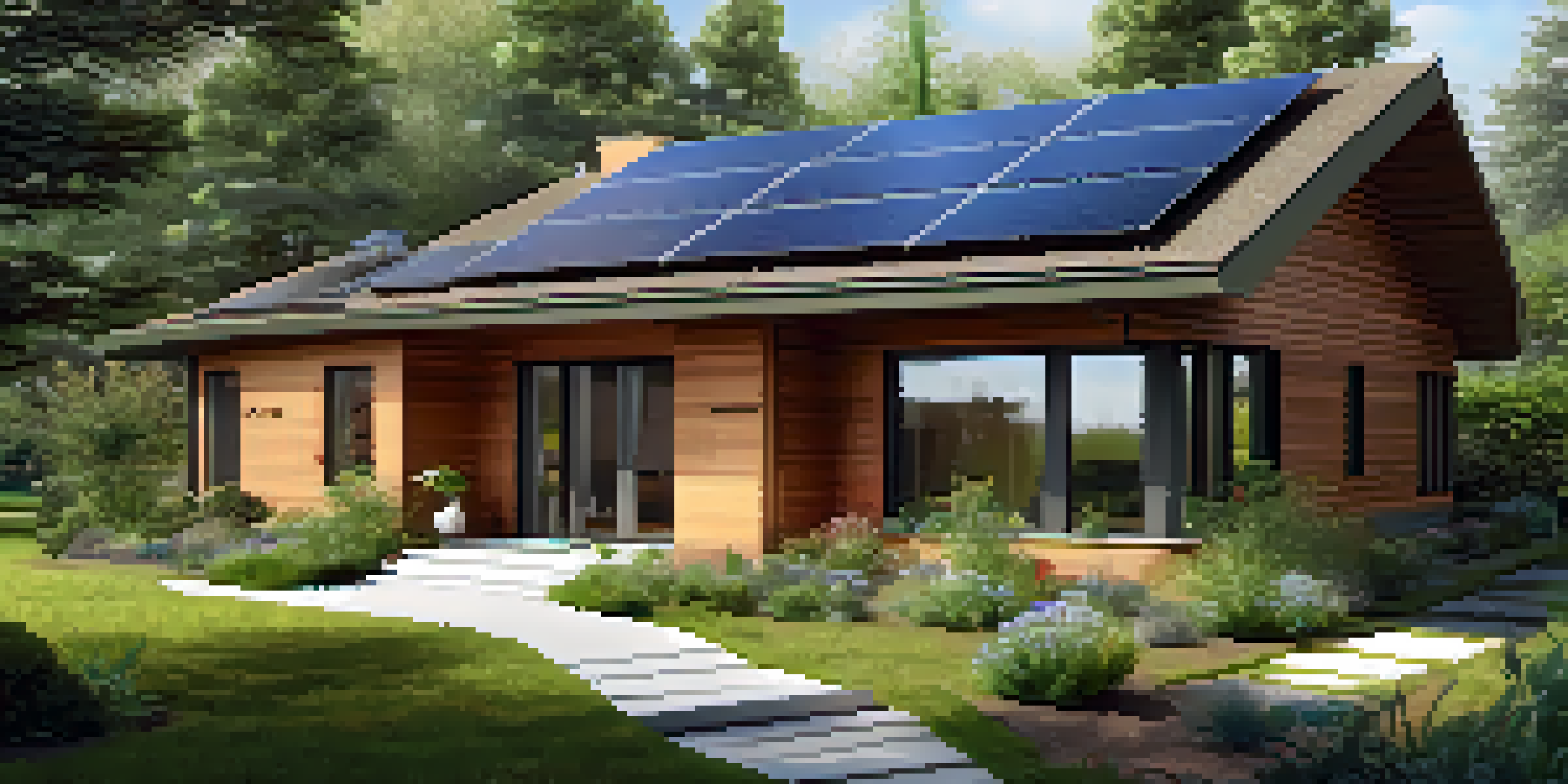Understanding Demand Dynamics in Real Estate: Trends Ahead

Overview of Demand Dynamics in Real Estate
Demand dynamics in real estate refer to the various factors that influence the need for properties in a given market. These factors can include economic indicators, demographic shifts, and changes in consumer preferences. Understanding these dynamics is crucial for investors, developers, and buyers alike, as they guide decision-making and strategy development.
Real estate is an imperishable asset, ever-increasing in value. It is the most solid security that human ingenuity has devised.
For instance, a surge in remote work has led many to seek larger homes outside urban centers. This shift not only alters the types of properties in demand but also impacts pricing and market saturation in different regions. Keeping an eye on these trends helps stakeholders anticipate changes and position themselves effectively.
As we delve deeper into the specifics of demand dynamics, it becomes evident that adaptability is key. Whether you’re a homeowner or a real estate professional, staying informed about these trends will allow you to navigate the market more successfully.
Current Economic Influences on Demand
The economy plays a pivotal role in shaping real estate demand, with factors like interest rates, employment levels, and inflation acting as key indicators. For example, when interest rates are low, borrowing becomes cheaper, encouraging more buyers to enter the market. This influx can drive up property prices and create a competitive landscape.

Conversely, economic downturns can dampen demand, as potential buyers may hold off on making significant investments. Understanding these economic cycles allows investors to make informed decisions about when to buy or sell. For instance, during a recession, focusing on rental properties may provide more stability than seeking quick sales.
Economic Factors Drive Demand
Interest rates and economic cycles significantly influence real estate demand, impacting buyer behavior and investment strategies.
Ultimately, being aware of economic influences helps stakeholders anticipate market shifts and adjust their strategies accordingly, ensuring they remain ahead of the curve.
Demographic Shifts Impacting Real Estate Demand
Demographics are a powerful driver of demand in real estate, as different age groups and life stages seek varying types of housing. For instance, millennials are increasingly entering the housing market, often favoring urban areas with access to amenities and public transport. This trend is reshaping the types of properties being developed and marketed.
The best investment on Earth is earth.
On the flip side, baby boomers are downsizing, looking for more manageable living spaces as they enter retirement. This creates a growing demand for smaller, single-story homes or even active adult communities. Recognizing these demographic shifts can help real estate professionals tailor their offerings to meet the specific needs of these groups.
Understanding who your buyers are and what they want is essential. It’s not just about selling homes; it’s about creating spaces that resonate with different lifestyles and family structures.
Technological Advancements Shaping Demand
Technology is revolutionizing the real estate sector, influencing how properties are marketed and sold. Virtual tours, online listings, and digital marketing strategies have made it easier for buyers to explore options from the comfort of their homes. This shift has made the market more competitive, as buyers can now access a wider range of properties.
Moreover, technologies like AI and big data analytics are being used to predict market trends and buyer behavior. For instance, real estate platforms can analyze user search patterns to recommend properties that fit individual preferences. This not only streamlines the buying process but also enhances customer satisfaction.
Demographics Shape Housing Needs
Different age groups and life stages create diverse housing demands, with millennials favoring urban living while baby boomers seek manageable spaces.
Embracing these technological advancements can give real estate professionals a significant edge. It’s all about leveraging the tools available to meet the demands of today’s tech-savvy consumers.
Environmental Considerations Influencing Demand
Sustainability is becoming a significant factor in real estate demand as buyers increasingly prioritize eco-friendly features. Properties equipped with energy-efficient appliances, solar panels, and sustainable materials are often more attractive to environmentally-conscious consumers. This trend is not just a passing fad; it's reshaping the industry.
For example, developers are now focusing on green building practices to meet this rising demand, leading to the creation of communities that emphasize sustainability. Buyers are willing to invest more in homes that promise lower utility costs and a smaller carbon footprint. This shift is not only good for the planet but also for long-term property value.
As environmental considerations continue to gain traction, real estate stakeholders must adapt to these demands. By integrating sustainability into their offerings, they can attract a broader audience and future-proof their investments.
Urban vs. Suburban Demand Trends
The debate between urban and suburban living has intensified, especially in the wake of the pandemic. Many individuals and families are reconsidering their living arrangements, with a noticeable shift towards suburban properties that offer more space and a quieter lifestyle. This trend marks a significant change in demand dynamics across various markets.
Cities, once the epicenters of real estate demand, are seeing some fluctuations as residents prioritize comfort and affordability. However, urban areas still hold appeal due to their vibrant culture and job opportunities. The key for real estate professionals is to understand the unique selling points of both environments to cater to diverse preferences.
Sustainability Gains Importance
Eco-friendly features and sustainable practices are increasingly prioritized by buyers, influencing property attractiveness and long-term value.
Ultimately, this evolving landscape requires a nuanced approach. By recognizing the strengths of both urban and suburban offerings, real estate agents can better serve their clients' needs and adapt to changing demand.
Future Predictions for Real Estate Demand
Looking ahead, several trends are likely to shape the future of real estate demand. The ongoing integration of technology, the emphasis on sustainability, and the evolving preferences of different demographic groups will play crucial roles. Real estate professionals who can predict these changes will be better positioned to capitalize on emerging opportunities.
Additionally, as remote work continues to be a viable option for many, we can expect continued interest in properties outside major urban centers. This shift could lead to a more balanced distribution of demand across various regions, making it essential for investors to diversify their portfolios.

The key takeaway here is that adaptability is vital. By staying informed and responsive to these trends, stakeholders in the real estate market can navigate the future with confidence and success.